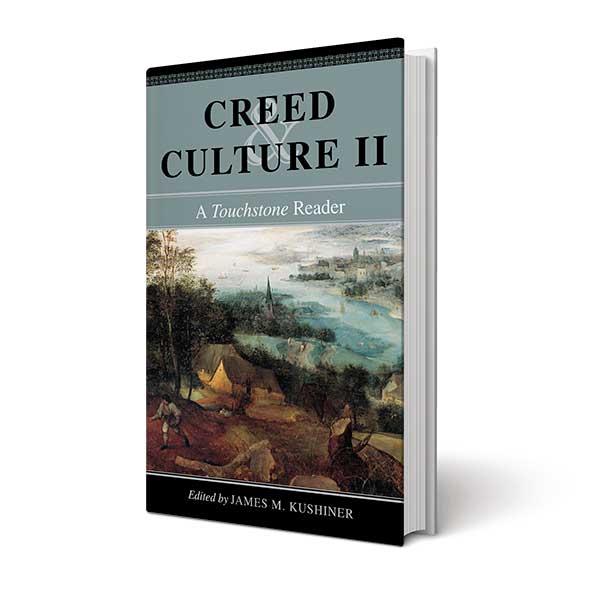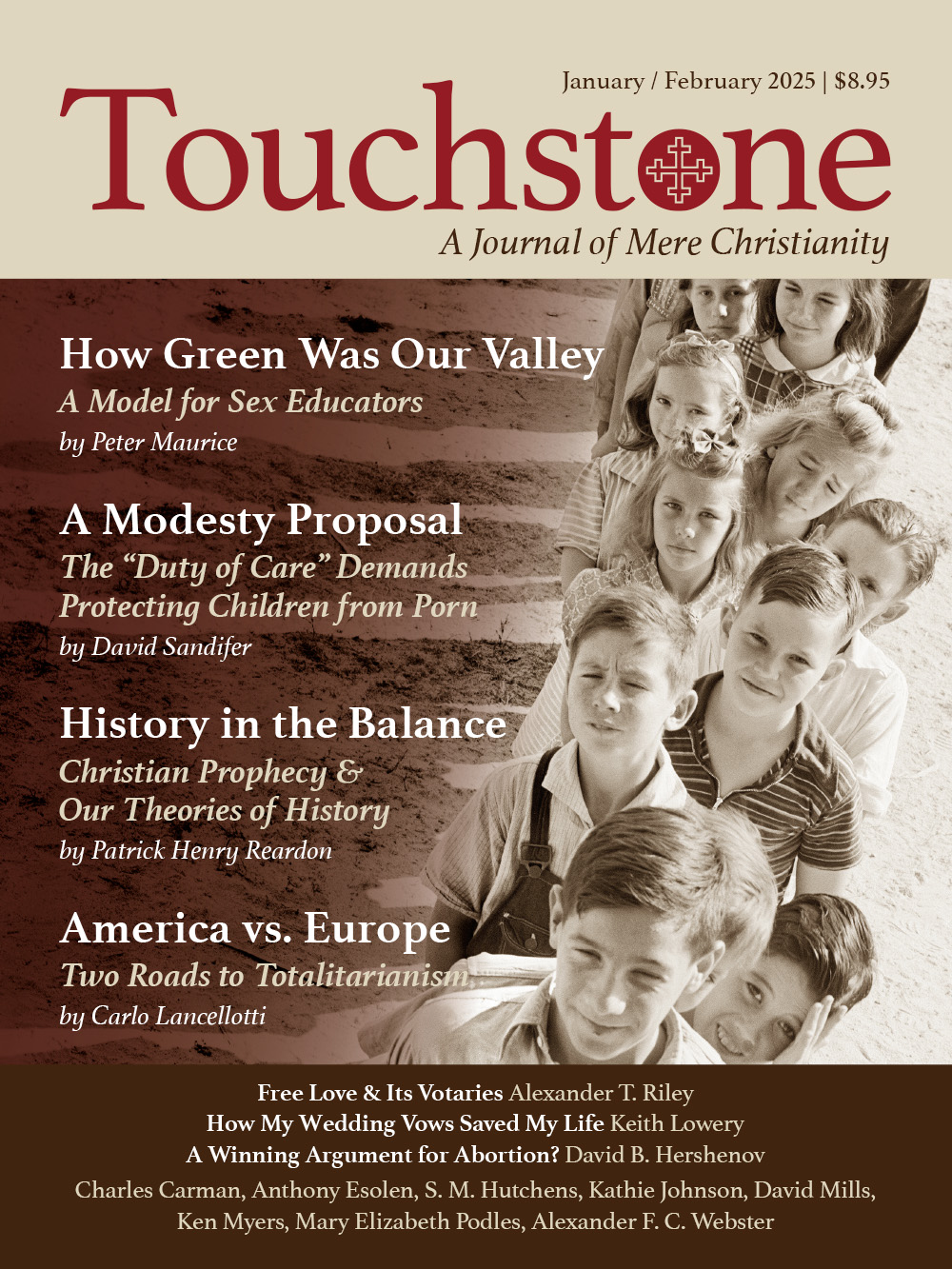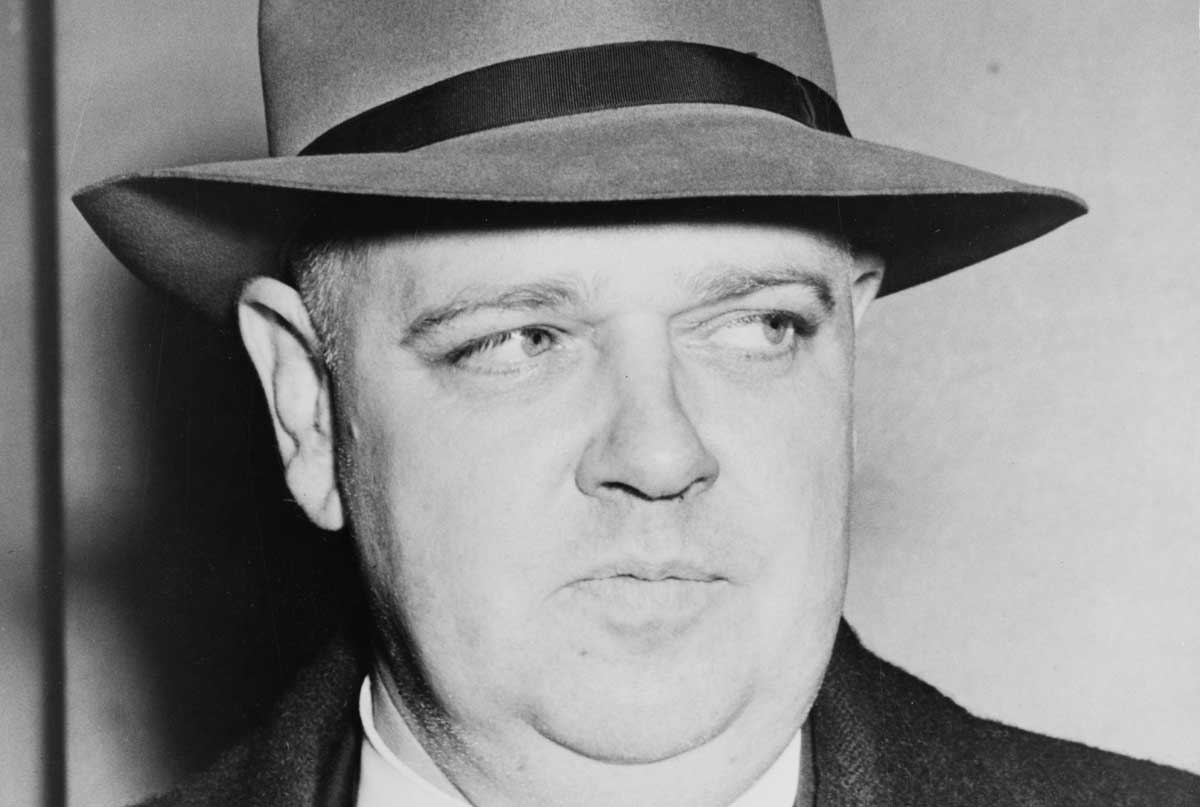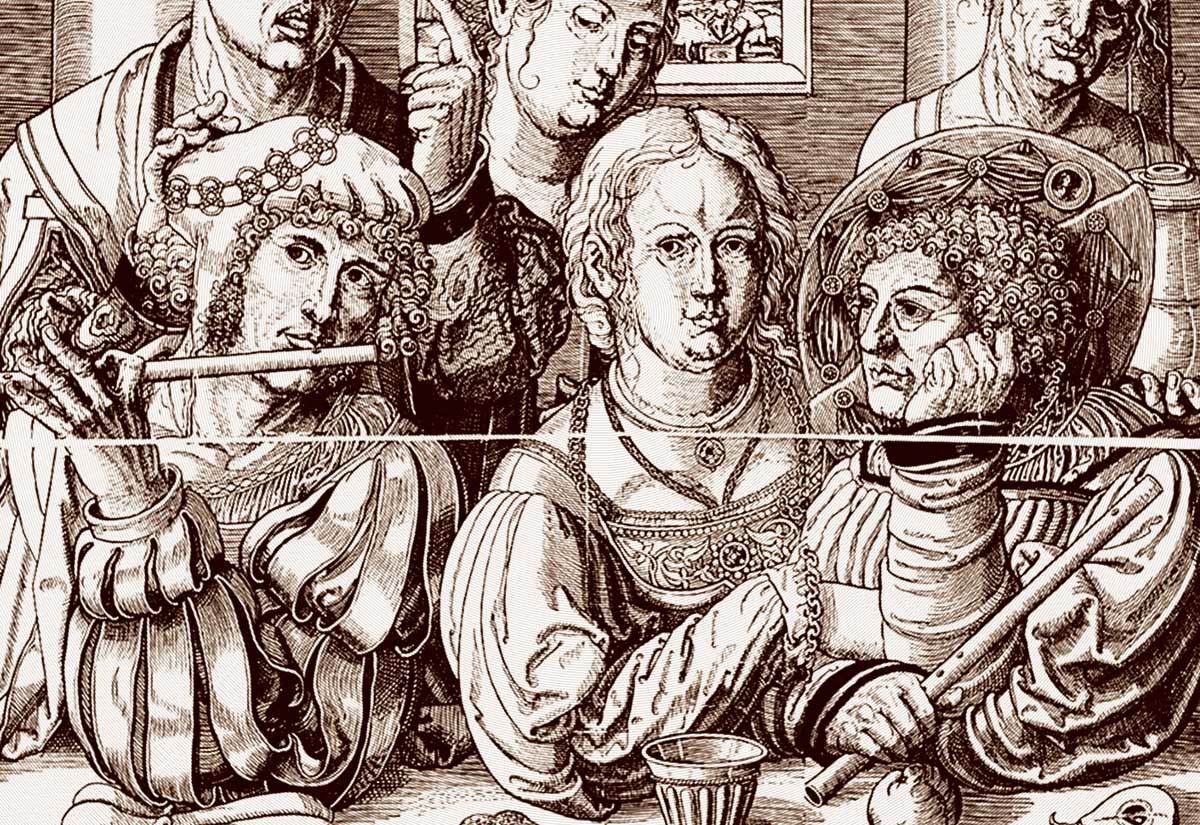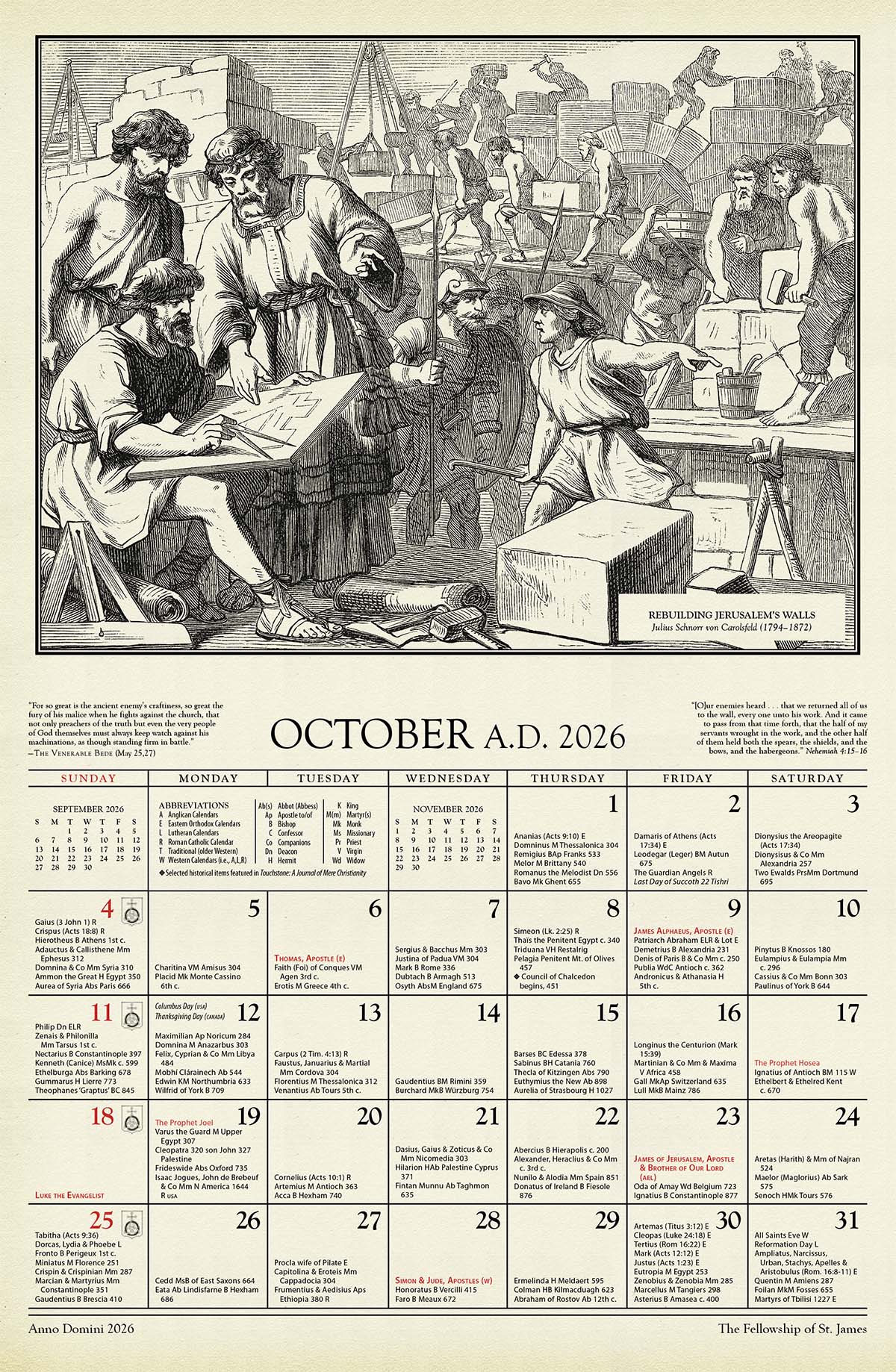America vs. Europe
Two Roads to Totalitarianism
It is a fairly common opinion that Western Europe secularized earlier than the United States. In his recent book, Life in the Negative World, Aaron Renn identifies 2014, the year of the Obergefell decision, as the symbolic date when U.S. culture switched from a “neutral” to a “negative” attitude towards Christianity. He remarks that this was the conclusion of a long process, which included “positive” and “neutral” stages, extending, roughly, from the early 1960s to the early 1990s, and from the early 1990s to 2014, respectively.
This timetable does suggest a slower process of cultural de-Christianization in the U.S. compared to Western Europe. Even leaving aside extreme cases like France around 1900 or Spain during the civil war, most European countries became “negative” well before the end of the twentieth century. We can pick as a symbolic event the 2003 controversy about including Europe’s Christian heritage in the draft of the so-called European Constitution. As you will recall, such inclusion was rejected by a majority of countries over the strenuous objections of Pope John Paul II. But the near-unanimity and the tone of the reactions in France, Germany, Belgium, and the Scandinavian countries revealed a Christian-negative attitude that must have been dominant for a while, probably since the so-called 1968 generation had come into its own fifteen or twenty years earlier.
Conversely, in the early 2000s, many people in the U.S. still believed in a sort of “American exceptionalism” which protected the country from radical secularization. Statistics about church membership and religious practice remained high in the U.S. for many years after they cratered in Western Europe. Evangelical Protestants were for many decades a potent political constituency. The American arrangement of the relations between church and state spared American Christianity the repudiation experienced by European state churches. You are probably familiar with these arguments.
However, this notion of a “delayed” American secularization stands in contrast to the views of many prominent European thinkers of the last century. Curiously, they also thought that America was “special” but in the opposite sense. They deemed the United States to be far more advanced than Europe in terms of a scientistic, utilitarian, individualistic, and materialistic worldview. For example, as early as 1943, when Simone Weil returned from New York to London a few months before dying, she wrote that the great danger threatening European Christianity was “Americanization,” by which she meant detachment from the past, which was slowly killing people’s ability to perceive the supernatural. The “Western” spirit of the Enlightenment “is found in America in its pure state and to the second power, and we are in danger of being devoured by it. . . . the Americanization of Europe would lead to the Americanization of the whole world.”
A few years later, Austrian psychoanalyst Wilhelm Reich, the theoretician of the sexual revolution, emigrated to the U.S. because he saw it as the only country where his revolution could succeed, despite its apparently puritanical sexual morality. In 1954, an important Italian Catholic philosopher, Michele Federico Sciacca, conducted an extensive review of contemporary American philosophy, and to his surprise and dismay concluded that
even if society in the United States calls itself Christian, American philosophy is essentially all atheistic. Not only that: it is marked by the idolatry of science, the tool that will radically change humanity by producing technical development, and will bring to mankind all the happiness that man by his “nature” can desire.
In 1970, another Italian philosopher, Augusto Del Noce, stated that “today America is the wellspring of the principle of disintegration,” although he immediately added (thinking of people like Reich and Marcuse) that “the poisoning of America has largely been the work of Europeans.”
So it appears that in terms of what might be called cultural de-Christianization—detachment from tradition, consumerism, an individualistic and therapeutic idea of happiness, sexual liberation and crisis of the family, etc.—the United States was actually ahead of Europe. But in terms of overt secularization—low religious participation, declining church attendance, low social and political status of Christianity—the U.S. was clearly behind Europe, so much so that those were still the years of the “positive world.” How to explain this apparent paradox?
Europe’s Route
Let me start from the European side. It is generally agreed that in continental Europe modern secularism took off at the time of the French Enlightenment, which, generally speaking, was much more anti-religious than the English-speaking version. Nonetheless, in the eighteenth and nineteenth centuries, atheism and secularism remained elite phenomena. The detachment from Christianity of large parts of the population occurred after World War II. How did it happen? What I think needs to be said in this regard is that in continental Europe, Marxism played a major role, not so much as a political movement but as a “counter--religion” or “substitute for religion,” which made possible a secularization of the masses that the intellectuals of the old Enlightenment had not been able to achieve.
Most of us are familiar with Marxism as a socio--political theory, but not everybody appreciates how much it was a comprehensive worldview with cultural and moral implications, how much it had “religious” appeal. At the core, it was a faith about redemption, to be delivered not by divine grace but by the mechanisms of social and economic history. It was this “messianic” flavor that made it appealing to the masses. Let me mention a famous Marxist thinker from the last century, my compatriot Antonio Gramsci. His overarching concern was to bring together intellectuals and the common people in a modern and secular worldview. Curiously, his model was medieval Catholicism. For Gramsci, the goal of communism exceeds politics in the narrow sense, because it must unify people around a new religious faith. As he wrote in 1916, “Socialism is the religion destined to kill Christianity.”
The important thing to understand is that the Gramscian project simultaneously succeeded and failed. It succeeded in one sense and failed in another. In the decades after World War II, it reached millions of people and moved them away from Christianity. The Italian Communist Party realized Gramsci’s program of cultural “hegemony” over the educational system, the media, the judiciary, labor unions, local governments, and so on. Its cultural critique deeply undermined the traditional ideas of God, family, and nation. And yet the outcome was not socialism. On the contrary, the years of the Marxist cultural hegemony were those when the country began to move decisively towards consumerism, individualism, and sexual liberation. These phenomena would have horrified Gramsci, who would have condemned them as decadent and bourgeois.
In short, Marxism had enough “religious” appeal to detach people from Christianity, but ultimately it facilitated bourgeois secularization, the rise of a more radical form of liberal capitalism. Del Noce described this paradoxical turn of events in a book titled The Suicide of the Revolution. The revolution won and committed suicide:
There is no doubt that for Gramsci the New Order would not be possible without the new revolutionary faith; Socialism must replace Christianity, just like Christianity replaced paganism. We see what has been the result of so many years of dominance by Gramscian culture: while it has been able to corrode, to an extent never seen before in Italian history, the old faiths, including Catholicism . . . it has failed to replace them with the new revolutionary faith.
America’s Route
The American trajectory to secularization was different from the very beginning. George Marsden, the distinguished Evangelical historian, in the introduction to his book The Twilight of the American Enlightenment, reminds us that
unlike the French Enlightenment and the French Revolution, the American Revolution involved a cordial working relationship between the dominant religious groups and most enlightened ways of thinking. In fact, a distinctive feature of the American experience was the synthesis of Protestant and Enlightenment principles that one finds widely in the early republic.
He adds that this “fusion of Protestant and more secular principles went through a number of permutations” over the nineteenth and early twentieth centuries, but “something like the old alliance was still perceptible in the 1950s,” when “liberal Protestants retained a respected place in the cultural mainstream.”
I think this “alliance” is key to understanding secularization in the United States. One gets a clear sense of this in the initial chapters of Marsden’s book, in which he investigates the major cultural trends in the U.S. of the 1950s in order to understand how the “American Enlightenment” finally came to an end. He identifies two apparently contradictory trends: on the one side, a consensus outlook celebrating scientific authority and individual autonomy; on the other, a religious revival. How did they fit together?
Marsden’s answer is that, in fact, “despite the religious revival taking place at almost every level, American culture of the 1950s was simultaneously strikingly secular” in the sense “that most activities were conducted without direct religious reference.” He describes this situation as a “privatization” of religion, citing Will Herberg’s 1955 book, Protestant-Catholic-Jew. America’s operative religion “turned religion from being the highest value into an instrument for promoting other values that in practice proved to be a person’s higher concerns” such as “the prevailing secular American ideals of autonomy and individuality.”
To expand on Marsden’s observations, I would like to recall an episode some readers may remember, the exchange back in the 1990s between theologian Father Richard John Neuhaus and Professor David L. Schindler. Their discussions mostly concerned the American liberal tradition and its compatibility with Christianity, but reading between the lines, one can discern two different theories of secularization.
Regarding Fr. Neuhaus’s views on the subject, his article, “The Liberalism of John Paul II,” in the May 1997 issue of First Things contains the following statement:
The theistic references of the Declaration [of Independence] . . . must be understood in the context of the innumerable statements by all the Founders that this constitutional order is premised upon moral truths secured by religion. The American experiment is constituted by a Puritan-Lockean synthesis that in recent decades has been bowdlerized to fit the secularist prejudices of our academic elites. It is imperative that we challenge the bowdlerized version of the founding that has been fobbed off on several -generations of students . . . and take our American history straight.
This passage is representative of a fairly common conservative view of secularization in the U.S. It makes essentially two claims: one, that the founders’ combination of religious and secular ideas (what Neuhaus calls a “Puritan-Lockean synthesis”) did not diminish the Christian character of the new country; two, that this synthesis was “bowdlerized” by secular academic elites.Therefore, what is needed is a recovery of “straight” American history and the essentially Christian nature of the founding. This vision certainly captures some truth, although one has to ask where those secular academic elites came from, considering that most American universities were founded by Christian denominations and secularized themselves well before the European intellectuals mentioned by Del Noce intervened.
On his part, Schindler argued that there was an original dualism in mainstream American religion. By dualism he meant a separation between the realms of reason and faith, nature and grace, human knowledge and divine knowledge. In his view, American religion tended historically to privilege piety and morality over intellectual life and cultural work. As a result, Christianity interacted with the various fields of human experience (science, arts, philosophy, politics, business) chiefly in moral terms. The fruit of religion was to produce virtuous scientists, artists, philosophers, politicians, and businessmen but not so much to inform their science, art, philosophy, politics, and business.
The unintended result was that, in the long run, even Christians tended to view knowledge and culture in essentially secular terms. As Schindler says, “the disjunction between the realms of piety and knowledge . . . invariably paves the road for a secularistic reduction of knowledge: pietism, in short, inverts inevitably into rationalism.” If piety withdraws from the realm of rationality, the latter becomes godless.
You see how easily this type of dualism can lead to the “privatization of religion” described by Herberg and Marsden. Unsurprisingly, in another article, Schindler, too, refers to Herberg’s book:
Herberg defines the “American Way of life” most succinctly as “secularized Puritanism.” According to him, religion and secularism in America have a peculiar way of turning into each other. Protestant-Puritanism, for example, and secularism both accept some significant sense of God’s separation from the affairs of this world. To be sure, they do so for opposite reasons. Puritans intend to subordinate all of their earthly life to the transcendent God; but, precisely to secure God’s transcendence . . . they are . . . prompted to draw a clean line between the earthly (“natural”) and the heavenly (“supernatural”) realms, thus breaking these two realms into separate fragments. The sincere religious intention of the Puritans is thus undercut by a logic of God’s transcendence, which, however unwittingly and paradoxically, can rightly be seen to coincide with a logic of secularism—which, for opposite reasons and with opposite intentions, also keeps God distant from “worldly” affairs. According to Herberg, in sum, America’s dualism is such that the order proper to this world remains logically a-theistic.
So these authors tell a story in which, to some degree, secularization was internal to the American religious experience. It was, to use a synthetic formula, the breaking apart of a dualism that was present early on and finally became unsustainable. The break had first manifested itself in the conflict between theological liberalism and Protestant orthodoxy, and it is arguably echoed in today’s extreme political polarization, which perhaps could be viewed as a sort of religious war between the two secularized “halves” of American religion. However, because this process did not involve an alternative “political religion” like communism in Italy, it did not immediately turn into political polarization.
Atheism’s Two Guises
Here I will again quote Del Noce, who in his book The Problem of Atheism observed that modern atheism always presents itself in two guises, either as “scientism” or “politicism.” Truly radical atheism does not operate by denying the existence of God abstractly, à la Bertrand Russell or Richard Dawkins. Rather, it attacks Christianity by offering alternative avenues to salvation, which typically boil down to two: salvation delivered by science and technology, or salvation delivered by politics. Del Noce claims that throughout European history, scientism played second fiddle, so to speak, to politicism. It seems to me that, contrariwise, the “dualistic” United States of the Cold War era gives an example of a culture in which scientistic atheism took absolute priority over political atheism.
When I speak of scientism, I am thinking primarily of the human and social sciences (which had a “golden age” after the war ) and not so much of the natural sciences—even though the former often base their claims to authority on the prestige of the latter. And when I associate the human and social sciences with atheism, I am referring to their denial not so much of God as of people’s spiritual nature. Many social scientists accepted uncritically that human beings are merely highly evolved animals, whose behavior can be entirely explained in material terms. Accordingly, they dismissed religious questions (let alone religious answers) as nonsensical.
Among many possible examples, think of the renaissance of American scientific sexology starting in the late 1940s: Alfred Kinsey founding the Institute for Sex Research, John Money “discovering” gender identity, Masters and Johnson’s books, etc. The whole field took for granted a vision of humanity that is breathtakingly, almost grotesquely atheistic. These were not just elite academic phenomena; they had broad impact. The Kinsey Reports and the books by Masters and Johnson were bestsellers and fueled the sexual revolution. Wilhelm Reich’s clichés of “liberation from repression” and “sexual positivity” became ubiquitous in popular culture. Sociologists, psychologists, and anthropologists replaced philosophers and theologians as cultural authorities.
There is no question in my mind that after World War II, the human and social sciences were major drivers of secularization in American culture, playing a similar role to that of Marxism in continental Europe. With a major difference: while the vision of a communist revolution never materialized, the sexual/therapeutic revolution quickly took off and succeeded.
To sum up, in a European country like Italy secularization was “oppositional,” meaning that secularism was explicitly anti-religious and openly political from the start. The major ideological force was Marxism, which was able to do destructive work and detach a large part of the population from the practice of Christianity, but failed as a revolutionary movement. In the U.S., secularization was more “stealthy,” meaning that (at least initially) it was not openly and aggressively anti-religious. In fact, secularism was able to co-exist with widespread religious practice by taking advantage of a certain dualism within American religion itself.
Secularism was not immediately political either, because its driving ideology was scientism, and its main advocates came from the human and social sciences. Its revolutionary project was sexual and therapeutic, and it triumphed at the cultural level long before it began to shape party politics in the strict sense. Incidentally, this is why the revelation of the “negative world” symbolized by the Obergefell decision came as a shock to quite a few people.
Eventually, of course, scientistic secularism did become political, as all forms of secularism necessarily do. This process started in the late 1960s and came to completion, I would say, in the 1990s. At that point, the European and American routes essentially converged, through a sort of hybridization process. On the one hand, the American scientistic and consumeristic model clearly triumphed in Europe, and the void opened up by the Marxist critique of traditional culture was filled by “permissivism,” the pursuit of sexual happiness and material well-being as the supreme goods. But at the same time, with the rise of the New Left, American secularism incorporated European Marxist and post-Marxist ideas, merging, so to speak, sexual liberation and political liberation. This process started from the academic elites and then trickled down to larger sectors of society, in which many years of scientistic and utilitarian education had created a cultural void which could be very easily filled by ideology.
Forms of Totalitarianism
The convergence of the two routes led to the establishment of today’s globalized, bourgeois, neo-liberal political order, organized ideologically around technocracy and various post-Marxist theories of emancipation (above all racial and sexual). In my view, this order displays some clear totalitarian features. However, having repudiated the class-based revolutionary aspirations of Marxism, its politics is at the same time totalitarian and “conservative,” in the sense of protecting the established order itself.
Let me clarify what I mean by “totalitarianism.” Still today, when people talk about totalitarianism, they constantly fall back on the “classic” forms of twentieth-century Europe: fascism, Nazism, communism. This is understandable, and it is absolutely true that there is much to learn from European experiences of totalitarianism—incidentally, this was one of my motivations to translate into English the works of Augusto Del Noce. However, I am convinced that by now communism, Nazism, and fascism are phenomena of the past. Although totalitarianism is still a present danger, its contemporary forms are by necessity different. Hence, we need a concept of totalitarianism flexible enough to include both old and new forms. Let me try to spell one out, based for the most part on Del Noce’s ideas.
I believe we must call totalitarian any worldview that affirms the supremacy of politics above all aspects of social life and absorbs into politics all other forms of culture, like education, science, religion, art, and so on. Totalitarianism is linked with the idea of radical social transformation, of a total revolution ushering in a completely new era, and even a “new man.” Accordingly, the totalitarian mindset denies all forms of authority that might constrain political action, and it recognizes power as the only political reality.
This denial of authority includes the denial of truth and ethics in the traditional sense. From a totalitarian perspective, the traditional concept of philosophy as a quest for wisdom and truth is replaced by the modern concept of ideology, i.e., purely instrumental discourse directed at transforming the world through political action. Ideologies can only be assessed based on their ability to effect change, since by definition it does not make sense to speak of their “truth.” Similarly, the only valid ethical distinction is between actions that aid social and political change and actions that hinder it.
I will also recall Del Noce’s thesis that totalitarianism is the most consistent political expression of secularism, not necessarily because of ill will on the part of the secularists, but by a philosophical necessity. All forms of modern secularism profess a fundamental optimism about the human condition because they accept uncritically the rationalist denial of the fallen state of humanity. Starting with Rousseau, the locus of evil shifted from the human heart to social organization. The fundamental secularist presupposition is not the non-existence of God but the autonomy and self-sufficiency of man, whose situation is “normal” and does not require any “salvation.” From this perspective, the only human problem is to achieve domination of nature through science and technology. Then this domination naturally extends to the human sphere (since man, after all, is a purely “natural” being from an atheistic perspective) and becomes “scientific” political transformation.
Today’s All-Embracing Politics
Totalitarian politics is a completely organic development of this vision, and, not coincidentally, it always claims to be supported by some pseudo-science, like the Marxist pseudo-science of history, or the Nazi pseudo-science of race, or today’s pseudo-science of gender. If there is no intrinsic limit to the possibilities of human action, it is only natural that politics should become the preeminent and all-embracing form of culture, the source of identity, hope, and meaning that replaces religion (Del Noce says) for the sake of human liberation.
Thus understood, totalitarianism is a much more general phenomenon than the Stalinist and National-Socialist forms. It is an enduring possibility within secular modernity, which can take as many different expressions as there are historical contexts in which secularism becomes culturally dominant. In fact, I believe that today we could identify more than one active totalitarian strain in our body politic. I mentioned earlier the dominant one, which Del Noce diagnosed already back in the early 1970s: the combination of scientism and sexual liberation which he called “Occidentalism.” In 1975, thinking of the role that the human and social sciences had played in Western culture since World War II, he wrote:
An advocate of scientism (and a society based on his way of thinking) cannot help being totalitarian inasmuch as his conception of science—as exclusive of every other form of knowledge and, thus, of various aspects of reality that are declared to be either unknowable or non-existing—is not susceptible of any proof. Nor can scientism be neutral, like science, with respect to values. The negation of traditional values, dissolved in the psychological and social conditions that occasion their appearance, is essential to scientism, and the only morality it can recognize is that of incrementing vitality.
“Incrementing vitality” means achieving the highest degree of material and psycho-physical well-being, fully expressing our animal life, so to speak. This requires a general “liberation of the instincts” in the name of “authenticity.” The result is a society in which “love,” understood in an instinctual-emotional sense, is the main ideological concept directing political change and dictating public morality.
This “soft totalitarianism of love” may not be as physically violent as the older forms, but it is no less oppressive of those who do not conform. Del Noce describes its possible outcome in strong terms:
Given these premises, it is easy to understand the process through which permissivism can establish itself. The remaining believers in a transcendent authority of values will be marginalized and reduced to second-class citizens. They will be imprisoned, ultimately, in “moral” concentration camps. But nobody can seriously think that moral punishments will be less severe than physical punishments. At the end of the process lies the spiritual version of genocide. The individual will be denied the right to his environment, to his traditions, to modesty. . . . And it could not be otherwise, if you think of it, because totalitarian regimes silence their enemies by claiming that their arguments, regardless of how they understand them, do not express rational motives but “class” or “race.” The same applies to the scientistic view that is the ideal foundation of the permissive society: “conservative” and “reactionary” arguments are said to reflect just a “repressed” psychology. Inasmuch as this “character structure” is the only obstacle to universal happiness, it seems right that those who carry it should be isolated and ostracized. . . . The new scientism, inasmuch as it is an unproven radical negation of traditional values, cannot but try to subjugate the will of its foes, rather than their reason, by means of the regime of terror created by the republic of letters . . . and since this negation is radical, it must confinethem in “moral ghettos.”
The Fatal Weakness
Del Noce did not regard these “moral ghettos” as inevitable, but wished us to be aware of the danger. Half a century later, the “permissivist regime” has grown much stronger and brought about the “negative world.” However, its fatal weakness has also grown. I will describe it as follows: Since its worldview is strictly positivistic and materialistic, it knows no transcendent realities and no values that can unify people. Its only “ideal” is individual psycho-physical well-being, and so it cannot formulate an image of the common good. Whereas communism had the proletariat, and Nazism had the German Volk, our ruling ideology has only the “rainbow” of sexually liberated, authentic individuals.
The rainbow metaphor is apt, because when white light is diffracted, each color goes in a different direction. This is why Del Noce called permissivism a “totalitarianism of disintegration” (or “dissolution”) because by nature it disintegrates, or dissolves, all the bonds that tie people down and stand in the way of individualistic self-realization. It must reject as oppressive the family, the nation, the Church, and in fact any social structure that claims any form of authority.
Del Noce predicted that the final outcome of this disintegration would be a non-society, in which individuals live together without holding anything in common. Clearly, such a non-society is impotent to build up new institutions. It can only parasitize, so to speak, institutions built around older ideas and values. But in the long run it must destroy them, and I think there is ample evidence today of the widespread failure of the very institutions that used to be the symbols of secular modernity: academia, journalism, professional and scholarly societies, political parties, and even scientific institutions (think of Scientific American promoting entirely non-scientific gender ideology). If space allowed, it would be interesting to discuss how this process of disintegration extends from institutions to individual personalities and manifests itself as a mental health crisis.
But since it is time to conclude, let me say that although as Christians we may be experiencing the “negative world,” we should not take for granted that the dominant secular culture is doing well, nor that its cultural and social institutions will just keep functioning unchanged, merely excluding us. Personally, I believe that for the worldview of the Enlightenment, the final divorce from Christianity marks at the same time a victory and a terminal crisis, because for its practical operations it relies on institutions it cannot sustain and human materials it cannot produce.
If this is the case, living in the negative world is not just a matter of protecting ourselves and our communities from hostile powers. It is also a matter of filling a growing void that is affecting everybody. Many of our contemporaries perceive a crisis that is ultimately a crisis of meaning, and that is endangering the very possibility of social life. Therefore, our Christian witness must include showing them in concrete ways (in education, at work, in the family, even in politics) that faith not only connects us with God, but also makes us able to address more intelligently the human needs we have in common with everybody. It is part of evangelization to reopen the possibility of being a human society.
Carlo Lancellotti is Professor of Mathematics at the College of Staten Island of CUNY and a faculty member in the Physics Program at the CUNY Graduate Center. He has translated three volumes of works by Augusto Del Noce, the late Italian philosopher and political thinker.
subscription options
Order
Print/Online Subscription
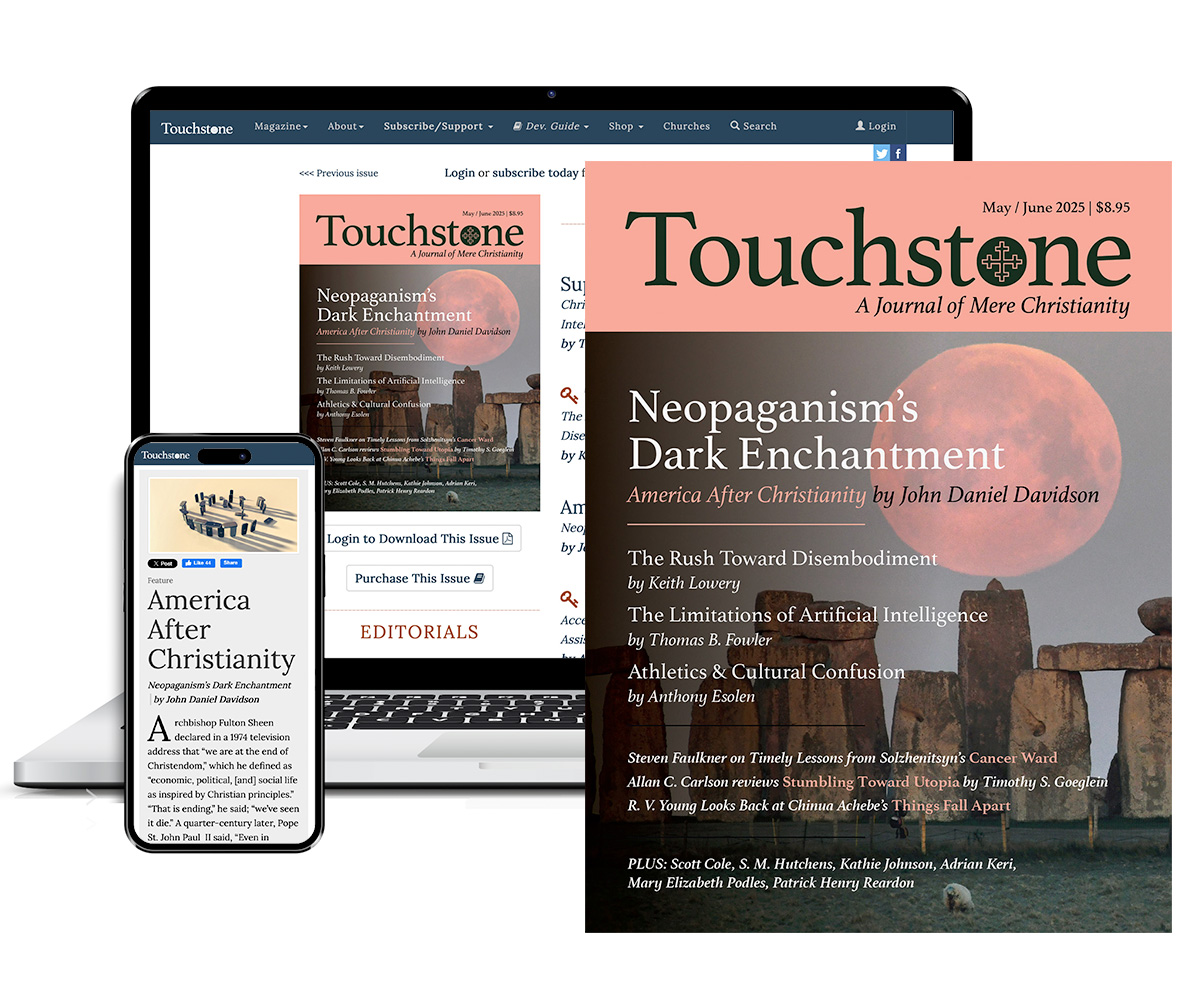
Get six issues (one year) of Touchstone PLUS full online access including pdf downloads for only $39.95. That's only $3.34 per month!
Order
Online Only
Subscription
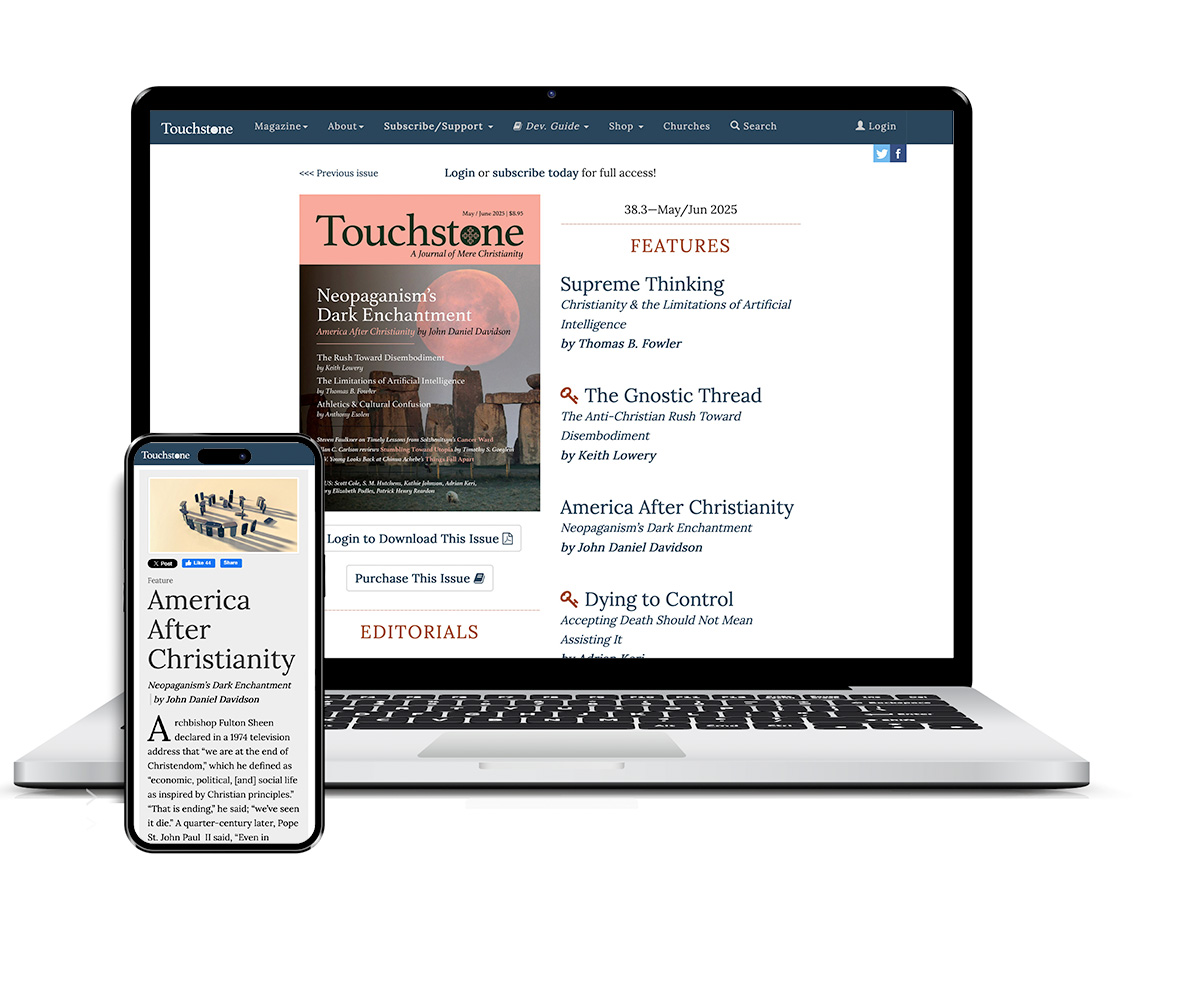
Get a one-year full-access subscription to the Touchstone online archives for only $19.95. That's only $1.66 per month!
bulk subscriptions
Order Touchstone subscriptions in bulk and save $10 per sub! Each subscription includes 6 issues of Touchstone plus full online access to touchstonemag.com—including archives, videos, and pdf downloads of recent issues for only $29.95 each! Great for churches or study groups.
Transactions will be processed on a secure server.
more on History from the online archives
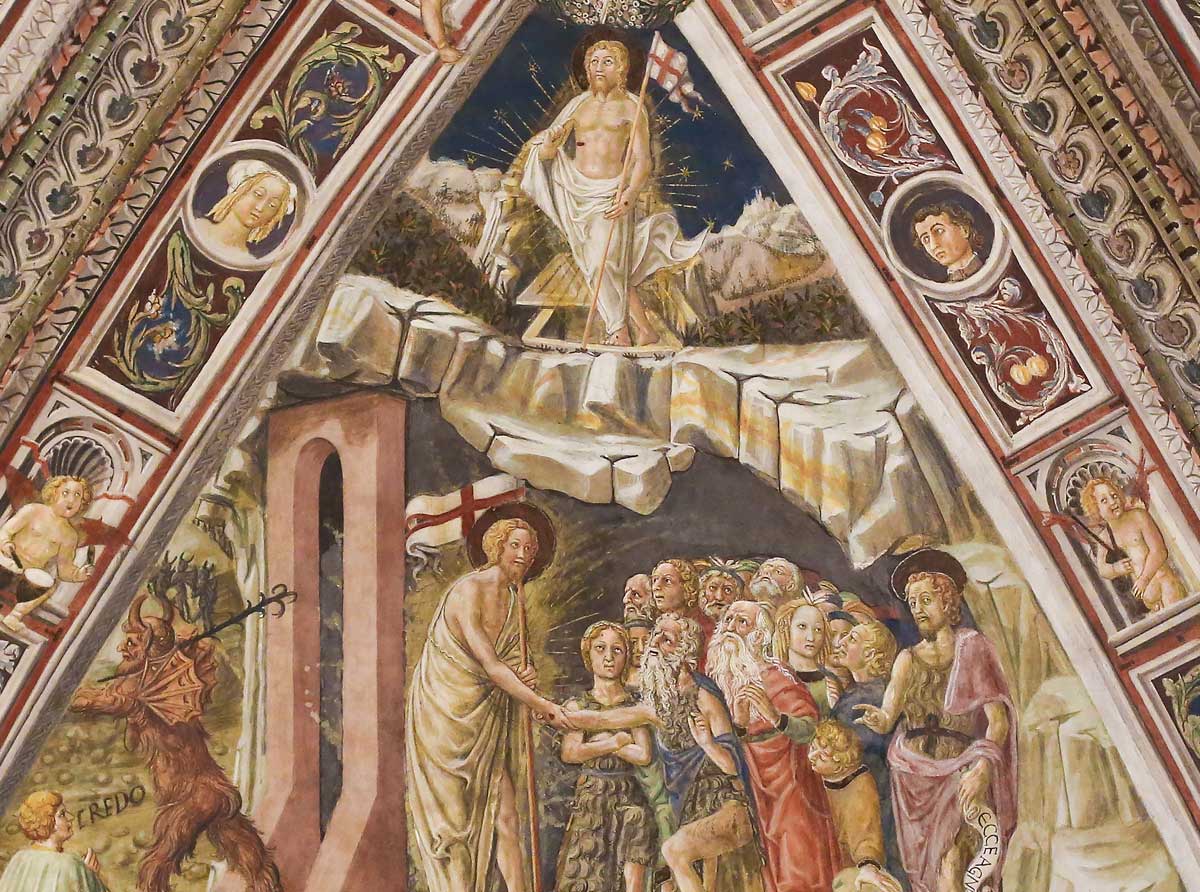
14.6—July/August 2001
The Transformed Relics of the Fall
on the Fulfillment of History in Christ by Patrick Henry Reardon
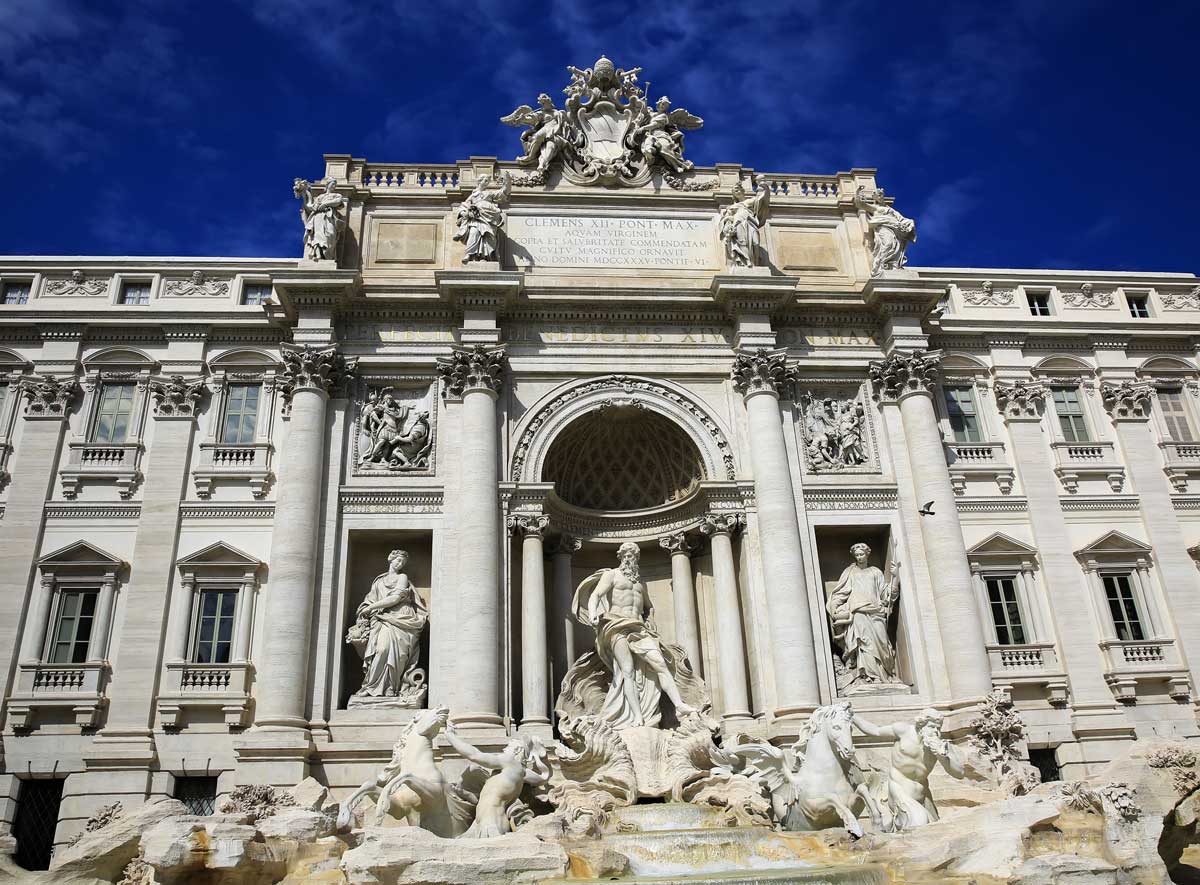
15.6—July/August 2002
Things Hidden Since the Beginning of the World
The Shape of Divine Providence & Human History by James Hitchcock
more from the online archives
calling all readers
Please Donate
"There are magazines worth reading but few worth saving . . . Touchstone is just such a magazine."
—Alice von Hildebrand
"Here we do not concede one square millimeter of territory to falsehood, folly, contemporary sentimentality, or fashion. We speak the truth, and let God be our judge. . . . Touchstone is the one committedly Christian conservative journal."
—Anthony Esolen, Touchstone senior editor




